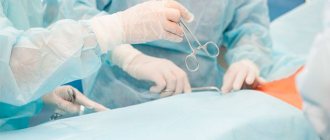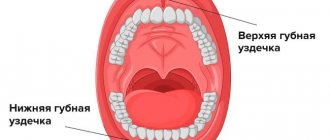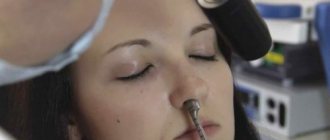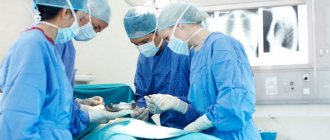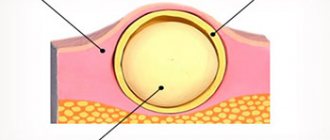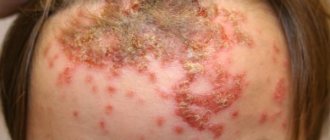Every year I perform more than 450 plastic surgeries, the lion's share of which are correction of the shape of the nose. Approximately 30% of them are allocated to revision rhinoplasty. It is interesting that it is usually decided on by men and women whose primary operation was performed in a closed manner. The “age” of the noses is approximately the same – from 3 to 7 years. It was since the end of the 2000s that closed rhinoplasty gained fame as a “sensational discovery” in Russian aesthetic medicine. Now people have to deal with its consequences - “dents”, deformations, drooping of the tip and other characteristic defects.
Alas, some of my colleagues are still replicating the closed method to the masses, and ordinary people sleep and see how they find the perfect nose “without a hitch.” What attracts doctors who offer such services? No scars, protection from bleeding, instant recovery?
I am ready to personally debunk all the myths associated with closed rhinoplasty so that you, dear readers and potential patients, can evaluate its advantages and disadvantages objectively.
“Bloodlessness” and “painlessness” are a bluff!
The essence of closed (endonasal) rhinoplasty is the formation of a specific access through the mucous membrane of the nostrils, supposedly less traumatic and more effective.
MYTH: Closed rhinoplasty involves less tissue and fewer incisions. Comments: When performing an endonasal operation, all the skin is peeled off in the same way as with the open method, and exactly the same vessels are cut. The only exception is that the skin isthmus of the nose between the nostrils remains intact - in the lower part of the columella.
By the way, a huge number of vessels and capillaries are connected to the mucous membrane of the nasal cavity and the skin, which are necessarily injured during surgery, regardless of its type. Therefore, there will be no less blood, if not more, with closed rhinoplasty than with open rhinoplasty. Healing after open rhinoplasty lasts exactly the same and depends on the individual characteristics of the patient’s body. And you will have to wear a cast in any case!
MYTH: Surgeons allow excessive bleeding during open surgery. With closed rhinoplasty, the absence of postoperative hematomas is promised. Supposedly, this technique “bypasses” large vessels and minimizes the release of blood from wounds, so there will be fewer bruises or no bruises at all.
- Firstly, the presence and severity of hematomas depends on the accuracy of the osteotomy;
- Secondly, the presence and extent of hematomas and bruises are controlled and corrected using decongestant therapy administered during surgery, and its success often depends on the anesthesiologist (!!!).
- Thirdly, an adequate surgeon will under no circumstances allow the patient’s face to resemble one big consequence of severe beatings after nose correction. He will oversee the preparatory (preventive) process, and during the intervention he will work extremely delicately and carefully.
MYTH: Closed rhinoplasty is less painful. Surgeons involved in PR for the “author’s” closed rhinoplasty claim that it is painless. Comments: I’ll tell you a secret - any plastic surgery is painless, especially rhinoplasty, since it is performed either under local anesthesia combined with intravenous sedation, or under general anesthesia. Despite the complexity of the process, rhinoplasty is characterized by easy rehabilitation - during the recovery period, the patient feels pain and discomfort only in exceptional cases. And this concerns rather the individual characteristics of the body, so the specific principle of rhinoplasty does not play a role here. And finally, a more or less realistic argument in favor of closed rhinoplasty is the absence of scars on the external nose (on the columella).
MYTH: Open rhinoplasty scars are visible and detract from your appearance. Comments: After open rhinoplasty, the scars completely disappear after 15-20 days - not a trace remains on the skin from surgical manipulations. Proper wound suturing is taught in medical institutes. And if the doctor insists on closed rhinoplasty, citing the absence of scar changes, perhaps he has not mastered the program well?
MYTH: Closed rhinoplasty is faster than open rhinoplasty. Comments: No, if you do high-quality closed rhinoplasty, then the time spent on the operation can be spent even more than with the open correction method.
It is impossible to do good work in 30-40 minutes that will not change over time.
Difficulties in carrying out
Revision surgery is a very complex process. Before performing it, the doctor needs to conduct a thorough examination of the patient, find out a detailed history of his previous operations: the reasons for undergoing rhinoplasty, the period that has passed since it, and living conditions during the rehabilitation period.
Sometimes patients do not tell the truth when examined by a surgeon. The result of the first surgical procedure can be so terrible that there is no desire to wait another year for the rehabilitation period. You should not do this, since during the recovery period the nose can repeatedly change its shape and become the way you would like it to be.
On this topic
- Rhinoplasty
Features of playing sports after rhinoplasty
- Editorial board of Plasticology.ru
- June 19, 2020
After consultation with the patient, the surgeon may prescribe the necessary procedures, for example:
- general blood analysis;
- Analysis of urine;
- blood test for rw;
- coaguloramma;
- radiography , etc.
Often, your doctor may need before and after photographs of your initial nose surgery. This way he can accurately imagine the problem and come up with ways to solve it.
Once the doctor is fully aware of the patient’s medical history and has all the necessary tests and documentation in hand, he can proceed to choosing a surgical correction technique. The doctor makes the choice together with the patient, informing him about the features of each method.
There are a number of factors that can significantly affect the level of complexity of the operation:
- deviated nasal septum;
- mechanical damage to the nose;
- level of mobility of nasal tissues;
- elasticity of the nose;
- density ;
- scar changes;
- deformation of subcutaneous tissues;
- insufficient amount of cartilage tissue (in this case, auricular cartilage is often used without damaging their appearance).
On this topic
- Rhinoplasty
How to reduce your nose with potatoes
- Editorial board of Plasticology.ru
- June 19, 2020
Sometimes, after a complete examination of the patient, the doctor may come to the conclusion that performing secondary rhinoplasty will lead to a health risk. He has the right to refuse to perform the operation. In this case, the patient should accept the results of the initial surgical intervention and not look for other doctors.
Due to previous unsuccessful nasal surgery, the choice of techniques may be somewhat limited. After it, the structure of the nasal tissue changes, an insufficient amount of cartilage tissue is formed, and internal and external scar changes in the skin appear. Such features largely hinder new rhinoplasty.
There are two methods of performing secondary rhinoplasty, which are practically no different from the basic techniques of primary rhinoplasty. This is an open and closed method. As a rule, the closed method requires high skill and precision from the surgeon, which is why doctors often prefer to go with the open method.
With the open method, the doctor can make incisions both outside the nose and on the mucous membrane. Revision rhinoplasty performed using the open technique allows:
- Carefully analyze the general condition of the nose and its frame, identify imperfections and find ways to eliminate them.
- Perform the operation more freely , with a wider view of the surgical field.
- Operate the patient without the need for additional mechanical expansion of the surgical field.
- Change the structure tissues more deeply.
Closed revision nasal surgery is performed if the patient needs minor changes. Thanks to this technique, the operation and rehabilitation period take a relatively short period of time, and the final result looks more aesthetically pleasing.
Any type of secondary rhinoplasty is performed under anesthesia, and its duration depends on the amount of work required.
Even if the second rhinoplasty is successful, complications may arise during the rehabilitation period. Due to the fact that the nasal organs are under stress, they can react to changes with inflammatory processes, pain, bleeding and swelling. To reduce the risk of such complications, the doctor introduces the patient to the rules for the recovery period:
- sleep on your back;
- temporarily avoid intense physical activity on the body;
- do not be exposed to direct sunlight , and do not visit the solarium;
- refuse salon facial cosmetic
- stop consuming foods that stimulate fluid retention in the body (alcoholic drinks, coffee and its derivatives, tobacco products, electronic cigarettes, salt and foods with a high content of it);
- stop wearing glasses for vision correction and sunglasses;
- avoid mechanical damage to the nose;
- protect your health from colds.
Can closed rhinoplasty completely correct the nose?
Closed rhinoplasty is generally quite simple to perform and even novice surgeons can handle it. In addition to this, it provides strictly limited opportunities for medical manipulation. With its help, small corrections are made, and only in this case can you guarantee a positive outcome. However, the consequences of the correction may appear after the intervention. For example, after closed rhinoplasty, delayed complications such as dips in the bridge of the nose and breathing problems are common.
The main reason for these consequences is the limited ability to repair, reconstruct and fix the upper lateral cartilages and nasal valves properly. Changes in the position of the tip of the nose are also often observed: this is a kind of insidiousness - the first few years after the procedure, the nose looks acceptable, and then suddenly “metamorphoses” begin: the tip drops or lifts up.
This method in its complex version is extremely technically complex, both in duration and execution. Only a true master and virtuoso can perform a high-quality closed rhinoplasty. But a knowledgeable doctor will choose a guarantee of an excellent result, rather than the difficulty of execution.
When is closed access relevant?
Having attended major professional conferences in Russia, Europe and the USA, I can confidently say that in the West almost no one practices closed rhinoplasty, with the exception of some Turkish surgeons. It is occasionally performed at the patient’s insistence. In all other situations, European and American surgeons, including “star” ones, perform only open rhinoplasty.
Ask the surgeon guiding questions
Ask a specialist:
- How can you peel off the skin from soft tissues without blood and pain?
- How can nasal tip correction be performed without normal access to the lower lateral cartilages? Is it really possible to get a thin tip without sewing them together?
- How can closed rhinoplasty be absolutely bloodless if it also involves making an incision, but inside the nostrils along the mucous membrane (which, by the way, is much more sensitive than the skin), and then also peeling off the skin? Is this street magic?
I strongly recommend asking your surgeon for photographs and videos of his surgical results from all angles. As practice shows, intrusive and aggressive advertising is supported by “evidence” in the form of a couple of photographs strictly in profile, from which, in principle, one cannot judge the final quality of the work.
Indications for revision rhinoplasty
- Impaired respiratory function of the nose.
- Aesthetic defects resulting from incorrect tissue redistribution.
- Patient dissatisfaction with the result of rhinoplasty.
- Pronounced scars on the outside of the nose;
- Depression of the bridge of the nose, depression.
- Nasal asymmetry;
- A hump in the nose that appears after primary rhinoplasty.
When can revision rhinoplasty be done?
Many patients ask: “How long before revision rhinoplasty can be done?” So, repeated plastic surgery can be done only after the nose has completely healed! You can talk about repeat nose surgery only after 6, or better yet, 12 months.
Example of revision rhinoplasty
“Revision rhinoplasty is a world of its own. Here we are approaching the theme of reconstruction, that is, the re-creation of something lost. It sounds a little scary, but any rhinoplasty is the removal or modification of bones and cartilage, therefore after the first operation they are in an altered state or removed. That is, the first serious point is that some tissues or parts thereof are missing. Second point. Patients who come for repeat surgery often have dense internal scars, which also deform the internal structures of the nose and cause distortion of its shape. So, to perform a good revision rhinoplasty, we often have to recreate cartilage or bone, remove scar tissue... Where does the missing material come from? If the nasal septum is preserved, then this is the first donor area. We can take the cartilage from there. Or use ear or rib cartilage.”
Tamarov Alexey Nikolaevich plastic surgeon
Benefits of classic open rhinoplasty
I have highlighted the key advantages of traditional rhinoplasty that closed rhinoplasty cannot boast of:
- Multifaceted possibilities for any type of correction due to unhindered access to all components of the nasal frame;
- Equal availability of bone and soft tissues, as well as upper and lower cartilage (which allows you to successfully model both the back and the tip of the nose);
- Minimal probability of error (as opposed to closed rhinoplasty, which is essentially performed “blindly”);
- Availability of all resources for working in innovative techniques (for example, win-win structural rhinoplasty is performed only from open access);
- Visibility of the effect (the corrected nose, which the surgeon sees at the final steps of the operation, will be the final result);
- No postoperative complications or changes in the shape of the nose.
Indications and contraindications
Laser rhinoplasty is used when it is necessary to improve the appearance of the nose. However, in some cases, surgery is prescribed for medical reasons. As a rule, this concerns the presence of fractures or other injuries that affect not only the appearance, but also the functionality of the organ.
For example, rhinoplasty is recommended to correct a deviated nasal septum. This helps get rid of snoring.
Using this procedure, it is possible to correct the following defects:
- Removal of a hump on the back of the nose.
- Correction of unsightly nostril shape.
- Changing the shape of the tip of the nose if it is too massive or long.
- Surgical correction of the consequences of injuries.
- Correction of a deviated nasal septum.
- Surgical correction of various congenital defects.
Thanks to the ability to adjust the width of the beam and the degree of its impact on tissue, it is possible to carry out the procedure with maximum precision. This is why laser rhinoplasty is recommended even in difficult cases.
Despite the obvious advantages of this method, there are a number of contraindications. These include various chronic diseases that can cause a difficult postoperative period or deterioration of the patient’s condition after the procedure.
Therefore, a competent surgeon not only examines the patient before surgery, but also prescribes a number of tests and collects a complete medical history of the patient.
The main contraindications include:
- The presence of malignant neoplasms.
- Decreased protective functions of the body.
- Low hemoglobin.
- The presence of serious neurological or mental illness.
- Chronic or acute diseases of the kidneys, heart or thyroid gland.
- Reduced blood clotting.
- Diabetes.
- The presence of inflammatory processes in the nasal area.
- Hypertension.
- Viral infection.
- Pregnancy or lactation period.
- Menstruation.
It is also not recommended to perform surgery after a fresh tan. Therefore, before the intervention, it is recommended to avoid the sun and visiting the solarium for a month.
Laser septoplasty: price in Moscow
The cost of laser septoplasty depends on many factors: the degree and nature of the deformation of the nasal septum, the experience and qualifications of the doctor, as well as the level of equipment of the clinic. The use of expensive equipment, of course, also affects the price of laser septoplasty.
| Name | Price |
| Septoplasty | 80,000 rub. |
| Stay in the observation room (up to 3 hours) | 3,000 rub. |
| Primary appointment (examination, consultation) with a plastic surgeon | FOR FREE |
If you go to a public clinic to see your ENT doctor with problems of difficulty breathing, sinusitis, severe snoring or frequent nosebleeds, then if a deviated nasal septum is detected, septoplasty can be performed under the compulsory medical insurance policy. However, in most cases this is a paid operation. As for laser septoplasty, the possibility of performing this operation depends on the level of technical equipment of the clinic. The average price for laser septoplasty of the nasal septum in Moscow is 56,500 rubles.
Surgeons at our clinic perform both separate surgical correction of the nasal septum and septoplasty combined with rhinoplasty (aesthetic nose surgery). Our specialists adhere to proven surgical methods of septoplasty, which allows us to achieve a well-predicted and high-quality result of septoplasty.
Side effects and recovery
Closed rhinoplasty is a surgical intervention on the body, so there is a high risk of complications. The reason for the occurrence of side effects may lie in the doctor’s mistake or his low professional level, as well as non-compliance with the rules of the rehabilitation period.
The main side effects include:
- hematomas;
- the appearance of scars;
- prolonged nasal congestion;
- bleeding;
- decreased sensitivity;
- the appearance of a vascular network;
- increased pigmentation;
- asymmetry;
- inflammation.
After the operation, the patient is in the hospital for the first two days, after which the recovery period continues at home. Rehabilitation lasts 10-14 days, after this period the doctor removes the plaster cast, and the patient can see the first results of rhinoplasty.
To reduce the risk of complications, simple recommendations must be followed during the rehabilitation period. It is necessary to avoid any physical activity, as it increases blood pressure, which is dangerous due to bleeding.
During the rehabilitation period, you must refrain from visiting baths and saunas for the same reason. Also, do not get the plaster cast wet. Other recommendations:
- rejection of bad habits;
- sleep only on your back;
- refusal in the first days from cold or contrast showers;
- drinking enough fluids;
- avoiding stressful situations.
If side effects occur, you should consult a doctor.
Preparing for surgery
Laser rhinoplasty is a simple and safe procedure. But, like any other surgical intervention, it requires careful preparation. To minimize the risks and recovery period, it is necessary to strictly follow the surgeon’s recommendations.
Preparation for surgery includes the following aspects:
- Refusal to take medications that contain aspirin . The fact is that such drugs thin the blood, which can cause bleeding during the procedure. You should stop taking aspirin two weeks before surgery.
- Stop taking vitamins E. The reason is the same. Vitamins of group E can increase bleeding, so it is also better to stop taking them two weeks before surgery.
- Refusal of medications to stabilize blood pressure .
- Sun protection . A few days before the operation, you should protect your facial skin from direct sunlight as much as possible. To do this, you should use sunscreen.
- Quitting alcohol and smoking. Smoking and drinking alcohol are prohibited the day before the operation. This will help avoid blood clots and other complications.
- Abstinence from food . The operation is performed on an empty stomach, so 8 hours before the operation you need to refrain from eating any food.
- Cosmetics . You should not apply cream or decorative cosmetics to your skin the day before surgery.
On this topic
- Rhinoplasty
How to remove a hump on the nose
- Editorial board of Plasticology.ru
- July 8, 2020
Before performing laser rhinoplasty of the nose, the surgeon collects a complete medical history and prescribes tests. Typically, the following studies will be required:
- Laboratory examination of urine.
- Blood test for HIV and sexually transmitted diseases.
- Electrocardiogram.
- Fluorography.
- General blood analysis.
- Analysis for group, Rh factor and biochemistry.
- Clotting factor analysis.
- Visiting specialized specialists. We are talking about a therapist who will assess the general state of health, an anesthesiologist and an otolaryngologist. In some cases, a visit to a psychologist will be required to make sure that changing the appearance of the nose is a balanced decision and not a momentary weakness.
However, the main stage of preparation is the choice of a professional surgeon. Preference should be given to doctors who are qualified to perform both closed and open rhinoplasty.



